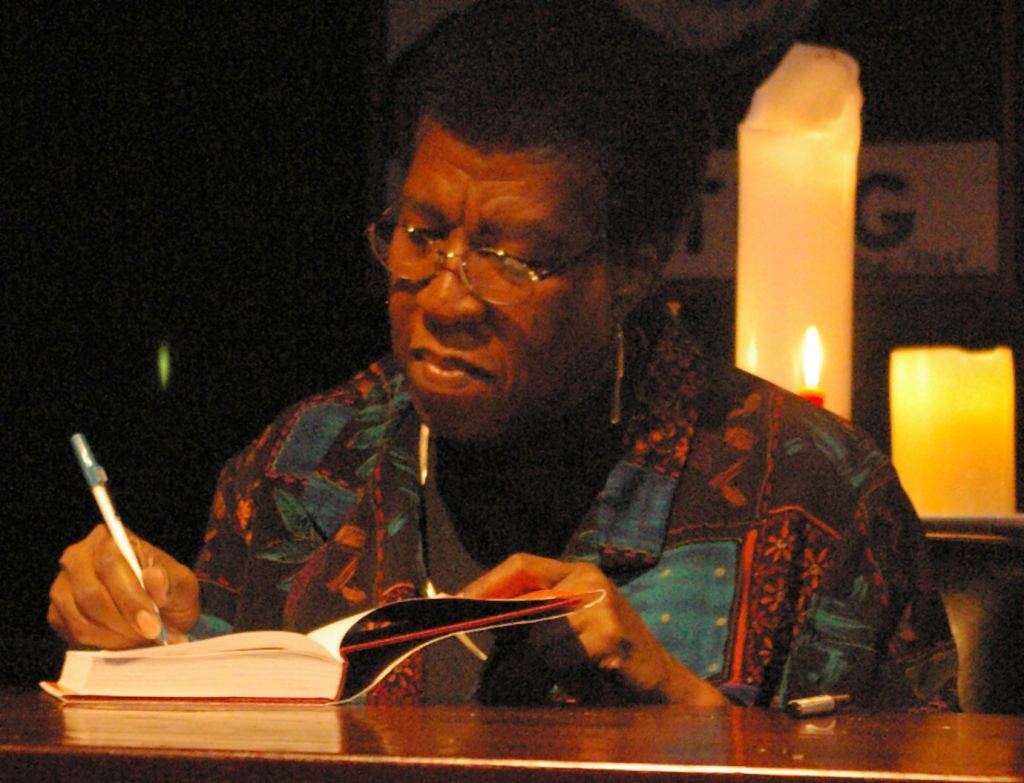Perseverance’s Landing Site Named for Octavia Butler
By Matt Williams
On March 4th, 2021, the Perseverance rover began driving from its landing site on Mars. During this drive, the rover covered 6.5 meters (21.3 feet) and conducted some basic maneuvers and instrument tests. In keeping with a NASA tradition where mission controllers give unofficial nicknames to various geological features, the team also consecrated the landing site by naming it after a famous science fiction author.
Henceforth, the site where Perseverance landed will be known as the “Octavia E. Butler Landing,” in honor of the groundbreaking science fiction author who passed away in 2006 (she was 59 years old). Butler is renowned for being the first African-American woman to win both the Hugo and Nebula Award and was the first science fiction author honored with a MacArthur Fellowship (in 1995).
This decision coincided with the 15th anniversary of Octavia E. Butler’s death on Feb. 24th. Butler’s impressive body of work includes the novels Kindred, Bloodchild, Speech Sounds, Parable of the Sower, Parable of the Talents, and the Patternist series. While her work was speculative and futuristic, it was always grounded in how it explored themes of race, gender, equality, and humanity.

Said Kathryn Stack Morgan, deputy project scientist for Perseverance.
“Butler’s protagonists embody determination and inventiveness, making her a perfect fit for the Perseverance rover mission and its theme of overcoming challenges. Butler inspired and influenced the planetary science community and many beyond, including those typically under-represented in STEM fields.”
In terms of science fiction themes and elements, Butler was known for her explorations of history, trauma, hierarchical power structures, survival, time travel, the impact of technology, and the creation of alternative communities. In Kindred, her best-selling novel, a young African-American woman (Dana) travels back and forth from 1976 Los Angeles to early 19th-century Maryland (before the Civil War).
There, she encounters her ancestors, a Black freewoman forced into slavery later in life (Alice), and a white slave holder (Rufus). The story is modeled on slave narratives and explores the realities of slavery in America from the point of view of modern sensibilities. The book was an instant classic and was awarded the 2003 Book of the Year prize by the city of Rochester, New York.
Also during the 1970s, Butler released a number of novels that made up her Patternist series. These books focused on a future society where genetically-engineered telepathy has created a new power structure in society. During the 1980s, Butler released her Bloodchild and her Xenogenesis trilogy, which take place on alien worlds, where humans are forced to coexist and even interbreed with extraterrestrial species to survive.

But perhaps her best-known work was the Parable series, written during the 1990s. Consisting of the The Parable of the Sower and The Parable of the Talents, these stories focus on a community’s struggle to survive after the collapse of 21st-century America. The series explores issues ranging from environmental stewardship and corporate greed to race, power, and growing gap between the wealthy and the poor.
This decision is in keeping with the NASA tradition where mission controllers give unofficial nicknames to various geological features. This was previously done with the Curiosity rover’s landing site, which was named the “Bradbury Landing” in 2012 in honor of famed fiction author Ray Bradbury (whose work includes the collection of short stories collectively known as The Martian Chronicles.)
Said Thomas Zurbuchen, NASA associate administrator for science:
“I can think of no better person to mark this historic landing site than Octavia E. Butler, who not only grew up next door to JPL in Pasadena, but she also inspired millions with her visions of a science-based future. Her guiding principle, ‘When using science, do so accurately,’ is what the science team at NASA is all about. Her work continues to inspire today’s scientists and engineers across the globe – all in the name of a bolder, more equitable future for all.”
While the International Astronomical Union (IAU) is responsible for assigning official names to astronomical objects and geographical features, the tradition of informal naming is an important aspect of space exploration. These nicknames are not informally recognized, they pay homage to individuals who have played a major role in advancing exploration – whether it is of the physical Universe or of the human condition.

Octavia E. Butler is in good company and her name now takes its place on what will soon become a new frontier of human exploration. When people begin to set foot on the Red Planet (and perhaps even settle there), her words and inspired body of work will hopefully continue to open people’s eyes and expand their awareness of the worlds we carry us with wherever we go.
As for Perseverance, it will continue to investigate the Jezero Crater to learn more about what conditions were like on Mars billions of years ago. In addition, it will collect soil and regolith samples in the hopes of finding evidence of past life on Mars. It will also be the first rover to secure samples in a cache that will be retrieved by a future NASA-ESA mission and returned to Earth for analysis.
The post Perseverance’s Landing Site Named for Octavia Butler appeared first on Universe Today.

March 21, 2021 at 02:59AM
via Universe Today read more...

Post a Comment